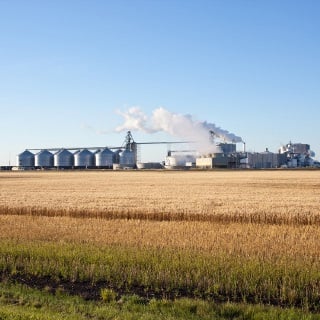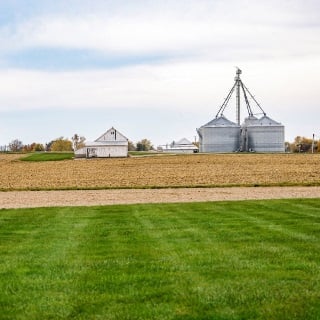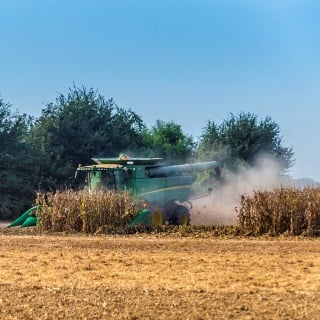LIBOR Transition
Last Updated June 10, 2021
The Federal Reserve’s Alternative Reference Rate Committee (ARRC) selected the Secured Overnight Financing Rate to replace USD LIBOR, the main reference rate used in credit instruments in the U.S. With more than $200 trillion of financial instruments based in USD LIBOR, the transition to an alternative reference rate should be followed closely.
This page features some educational materials and resources to learn more about LIBOR and potential changes coming to the industry.
What is LIBOR?
LIBOR (London Interbank Offered Rate) is an estimate of the cost of borrowing/lending for banks on an unsecured basis. The rate is determined each day based on rate submission from panel banks.
How important is LIBOR?
U.S. Dollar LIBOR is the dominant reference rate for financial instruments, particularly floating rate loans. The size of the contracts indexed to U.S. Dollar LIBOR is estimated to be more than $200 trillion. Many floating rate loans in the rural agriculture and rural infrastructure sectors currently use U.S. Dollar LIBOR as a reference rate.
What is changing with LIBOR?
U.S. and international banking regulators have expressed concern about LIBOR over the past several years. The primary concern is that the lack of a deep and liquid market of the underlying intra-bank transactions has reduced the reliability of LIBOR indexes. Regulators have stated that the market needs to transition to an alternative reference rate for floating rate transactions.
The United Kingdom’s Financial Conduit Authority (UK FCA) (LIBOR’s primary regulator) and the LIBOR index administrator, ICE Benchmark Administration (IBA), issued guidance on March 5, 2021 that all primary USD LIBOR tenors will either be discontinued or declared non-representative as of June 30, 2023 with some tenors discontinued by December 31, 2021.
U.S. bank regulators have issued guidance encouraging their supervised institutions (including Farm Credit Mid-America) to transition away from using LIBOR for new loans on or before December 31, 2021. Pursuant to current guidance, financial contracts entered into after December 31, 2021 should not be indexed to USD LIBOR.
Has an alternative reference rate been proposed?
The Federal Reserve convened the Alternative Reference Rate Committee (ARRC), which has recommended the creation of an alternative called the Secured Overnight Financing Rate (SOFR) as a replacement benchmark rate. SOFR is a broad measure of the cost of borrowing cash overnight collateralized by Treasury securities and is completely transaction based. The Federal Reserve Bank of New York began publishing SOFR trading data on April 3, 2018.
What’s next in the LIBOR transition process?
Financial market industry workgroups, regulators and fixed income market participates will be working to develop the new SOFR markets and the process for transitioning to it. SOFR futures and swaps are now in existence, cash instruments have begun being issued, and some SOFR loan products are now being introduced to the market.
What is Farm Credit Mid-America doing with regard to this issue?
The team at Farm Credit Mid-America has been working closely with several Farm Credit institutions, industry groups and financial regulators about the transition of LIBOR as a benchmark rate. It is expected that LIBOR will continue to be in use through 2021 for existing loans, though we continue to transition many of our customers’ loans off of LIBOR now. In early 2021 we transitioned away from offering LIBOR indexed products and we anticipate introducing our initial SOFR indexed products in the second quarter of 2021. Additional SOFR products will be introduced as they are made available. The ARRC has yet to recommend a forward-looking SOFR term rate, but it has recognized that such a tool will be useful to support the transition away from LIBOR. The ARRC continues to take steps, such as the publication of a set of market indicators, which would support the future ARRC recommendation of a forward-looking SOFR term rate.
If you have a financial contract with Farm Credit Mid-America that is tied to a LIBOR index, you should expect to be contacted by your Financial Officer or another Farm Credit Mid-America representative about the transition of that contract to another available product. If your contract is renewing, alternative rates will be made available. If your contract extends past the date upon which the applicable LIBOR tenor will be available or representative, Farm Credit Mid-America will need to transition your contract to another available rate. You should contact your Financial Officer if you have questions regarding this process.
What is the ARRC’s view on how the COVID-19 pandemic influences LIBOR’s end-2021 expiration date?
The ARRC continues to focus on the established timeline for the transition from LIBOR and the March 5th announcements make clear that LIBOR transition remains a priority. The ARRC recognizes that near-term, interim steps may be delayed given the current economic environment with the global pandemic, but given the latest announcements from the official sector reiterating the overall expected timeline, it remains clear that the financial system should continue to move to transition by the end of 2021.
Resources:
New York Federal Reserve Alternative Reference Rate Committee (ARRC)
- Announcements
- Publications on Floating Rate Notes
- Publications on Syndicated Business Loans
- ARRC Recommendations Regarding More Robust Fallback Language for New Originations of LIBOR Bilateral Business Loans [PDF]
- ARRC Recommendations Regarding More Robust Fallback Language for New Issuances of LIBOR Securitizations [PDF]
- ARRC Releases Recommended Fallback Language for Residential Adjustable-Rate Mortgages [PDF]
International Swaps and Derivatives Association
U.S. Commodity Futures Trading Commission
* Loans and leases are subject to credit approval. Additional terms and conditions may apply. Farm Credit Mid-America is an equal opportunity lender.





